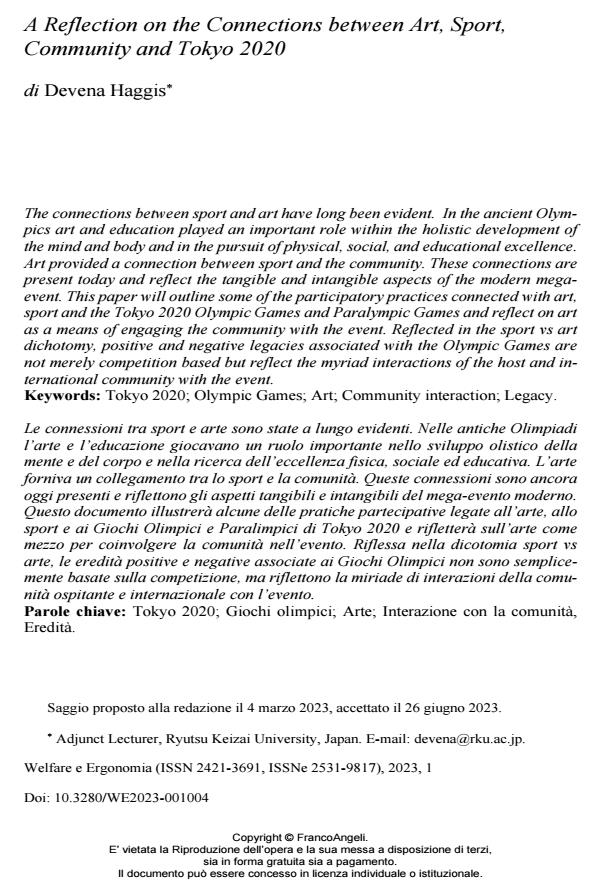A Reflection on the Connections between Art, Sport, Community and Tokyo 2020
Journal title WELFARE E ERGONOMIA
Author/s Devena Haggis
Publishing Year 2023 Issue 2023/1
Language English Pages 19 P. 39-57 File size 649 KB
DOI 10.3280/WE2023-001004
DOI is like a bar code for intellectual property: to have more infomation
click here
Below, you can see the article first page
If you want to buy this article in PDF format, you can do it, following the instructions to buy download credits

FrancoAngeli is member of Publishers International Linking Association, Inc (PILA), a not-for-profit association which run the CrossRef service enabling links to and from online scholarly content.
The connections between sport and art have long been evident. In the ancient Olympics art and education played an important role within the holistic development of the mind and body and in the pursuit of physical, social, and educa-tional excellence. Art provided a connection between sport and the community. These connections are present today and reflect the tangible and intangible as-pects of the modern mega-event. This paper will outline some of the participatory practices connected with art, sport and the Tokyo 2020 Olympic Games and Para-lympic Games and reflect on art as a means of engaging the community with the event. Reflected in the sport vs art dichotomy, positive and negative legacies as-sociated with the Olympic Games are not merely competition based but reflect the myriad interactions of the host and international community with the event.
Keywords: Tokyo 2020; Olympic Games; Art; Community interaction; Legacy.
- Youth Policy, Citizenship Education and Olympic Games Legacies Sandra Borges Tavares, pp.123 (ISBN:978-981-99-6578-6)
Devena Haggis, A Reflection on the Connections between Art, Sport, Community and Tokyo 2020 in "WELFARE E ERGONOMIA" 1/2023, pp 39-57, DOI: 10.3280/WE2023-001004